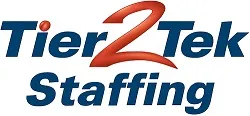Enterprise Architect Interview Questions with Answers

An enterprise architect (EA) plays a critical role in aligning a company’s IT strategy with its business goals. They ensure that the technology systems and procedures lead to outcomes that meet business requirements. If you’re a hiring manager looking to assess candidates for an enterprise architect position, or a job seeker preparing for your interview, the right questions can help evaluate expertise and problem-solving skills. Here are some top technical interview questions and simplified answers for the role of an enterprise architect:
1. What is Enterprise Architecture?
Answer: Enterprise architecture is a framework for aligning a company’s IT structure and operations with its business objectives, ensuring adaptable and effective support for strategic goals.
2. Describe the different layers of Enterprise Architecture.
Answer: Enterprise architecture comprises:
- Business architecture: Defines the business strategy and processes.
- Data architecture: Manages logical and physical data assets.
- Application architecture: Organizes applications and their interactions.
- Technology architecture: Outlines the necessary hardware and software infrastructure.
3. How do you align business and IT strategies?
Answer: Aligning these strategies involves understanding business objectives, designing supportive IT strategies, facilitating regular communication between IT and business leaders, and employing frameworks like TOGAF.
4. What is TOGAF?
Answer: TOGAF is a framework that helps organize the development, implementation, and governance of enterprise information architecture, aligning IT with business goals and helping manage budgets effectively.
5. What is the role of an enterprise architect in change management?
Answer: Enterprise architects facilitate technology changes to ensure alignment with business objectives, helping manage the impact on processes and stakeholders.
6. How do you measure the effectiveness of an enterprise architecture?
Answer: Effectiveness is measured through metrics like alignment with business goals, user satisfaction, system performance, and ROI.
7. Explain the significance of modeling in enterprise architecture.
Answer: Modeling provides a visual framework for understanding and analyzing the business structure, processes, and systems, aiding in effective decision-making and communication.
8. How do you manage stakeholder expectations in enterprise architecture projects?
Answer: Managing expectations involves clear communication, regular updates, and demonstrating how IT enhancements contribute to business goals.
9. What challenges do you face in enterprise architecture?
Answer: Common challenges include ensuring IT flexibility to adapt to business changes, integrating new and legacy systems, and aligning diverse stakeholder interests.
10. How does enterprise architecture contribute to cost management?
Answer: EA helps optimize processes and technology investments, ensuring that resources are wisely allocated to maximize ROI and reduce waste.
11. What frameworks other than TOGAF are used in enterprise architecture?
Answer: Besides TOGAF, other popular frameworks include Zachman, FEAF (Federal Enterprise Architecture Framework), and Gartner. Each framework offers unique perspectives and tools for organizing and implementing enterprise architecture.
12. How do you prioritize projects in enterprise architecture?
Answer: Prioritization is based on strategic business objectives, potential return on investment, risk mitigation, and alignment with long-term IT strategy. Stakeholder input and impact assessments also guide decision-making.
13. Describe a time when you had to make a difficult decision in your role as an enterprise architect.
Answer: This question seeks to understand decision-making skills under pressure, focusing on trade-offs between cost, effectiveness, and strategic alignment in past projects.
14. How do enterprise architects ensure compliance with data privacy and security regulations?
Answer: Compliance is ensured by incorporating legal and regulatory requirements into the design of business processes and IT systems, conducting regular audits, and promoting awareness and training within the organization.
15. What is the role of enterprise architects in digital transformation?
Answer: Enterprise architects lead digital transformation by designing IT infrastructures that support emerging technologies, enhancing customer experiences, and ensuring that digital initiatives align with business strategies.
16. How do you handle conflicts between different stakeholders in an enterprise architecture project?
Answer: Handling conflicts involves active listening, understanding differing perspectives, seeking common ground, and mediating solutions that align with overarching business goals.
17. Can you explain the concept of “enterprise architecture as strategy”?
Answer: This concept views enterprise architecture not just as an IT approach but as a foundational element that dictates organizational structure, operations, and strategic execution, influencing long-term success and adaptability.
18. What technologies are having the biggest impact on enterprise architecture today?
Answer: Technologies like cloud computing, AI, IoT, and blockchain are significantly impacting enterprise architecture by driving innovation, efficiency, and new business models.
19. How do you stay updated with technology trends and their implications for enterprise architecture?
Answer: Staying updated involves attending industry conferences, participating in professional networks, reading current publications, and taking continuous education courses.
20. What is the biggest challenge facing enterprise architects today?
Answer: One of the biggest challenges is balancing the rapid pace of technological change with the need to maintain a stable, secure, and cohesive IT environment that supports ongoing business needs.
21. How do enterprise architects contribute to innovation within an organization?
Answer: Enterprise architects foster innovation by identifying and integrating emerging technologies that align with business goals, optimizing processes, and facilitating a culture that supports experimentation and technological advancement.
22. What are some methods to ensure enterprise architecture initiatives are aligned with business outcomes?
Answer: Methods include establishing clear communication channels with business stakeholders, setting measurable objectives linked to business results, and implementing regular feedback loops to adjust projects as needed.
23. Describe how you would approach a legacy system integration in enterprise architecture.
Answer: The approach involves assessing the current capabilities and limitations of the legacy system, determining integration requirements, designing a compatible architecture, and implementing middleware or adapters to ensure seamless connectivity without disrupting existing operations.
24. How do you assess and mitigate risks in enterprise architecture?
Answer: Risk assessment in enterprise architecture involves identifying potential security, compliance, and operational risks, analyzing their impact, and implementing appropriate controls, monitoring strategies, and contingency plans.
25. What is your experience with cloud architecture and its integration with traditional enterprise systems?
Answer: This question gauges experience in designing and managing hybrid environments that combine cloud and traditional infrastructures, focusing on compatibility, security, and scalability.
26. Can you explain the importance of Service-Oriented Architecture (SOA) in enterprise architecture?
Answer: SOA is important as it allows for building modular systems that enhance flexibility, scalability, and interoperability, making it easier to integrate diverse and distributed technological assets.
27. How do you evaluate the success of an enterprise architecture program?
Answer: Success can be evaluated through metrics such as improved operational efficiency, reduced IT costs, enhanced system interoperability, achievement of strategic goals, and stakeholder satisfaction.
28. What strategies do you use to communicate complex technical strategies to non-technical stakeholders?
Answer: Strategies include using simplified language, visual aids like diagrams and flowcharts, real-world analogies, and focusing on the benefits and business impacts of technical decisions.
29. What role does data governance play in enterprise architecture?
Answer: Data governance ensures that data across the organization is managed according to consistent policies and procedures, which is crucial for data quality, security, and compliance in enterprise architecture.
30. How do you ensure scalability in enterprise architecture?
Answer: Ensuring scalability involves designing systems that can accommodate growth in users, data volume, and transactional demand without performance degradation, often through modular designs and cloud integration.
Common Technologies Used by Enterprise Architects

Enterprise Architects utilize a broad range of technologies to design, manage, and align business and IT strategies effectively. Here are some of the most common technologies they use:
- Enterprise Architecture Frameworks:
- TOGAF (The Open Group Architecture Framework): Widely used for designing, planning, implementation, and governance of enterprise IT architecture.
- Zachman Framework: A taxonomy for organizing architectural artifacts.
- FEAF (Federal Enterprise Architecture Framework): Used primarily within the federal government to link IT with business goals.
- Modeling Tools:
- ArchiMate: A modeling language that provides tools for creating coherent and consistent architecture descriptions.
- Sparx Systems Enterprise Architect: A high-performance modeling, visualization, and design platform based on UML and related standards.
- Microsoft Visio: Often used for creating diagrams that map out network infrastructures and architectures.
- Business Process Management (BPM) Tools:
- Bizagi: Facilitates the modeling, automation, and optimization of business processes.
- Pega: Known for its cloud-based software for customer engagement and operational excellence.
- Cloud Technologies:
- AWS (Amazon Web Services), Azure, and Google Cloud Platform (GCP): Provide a suite of scalable cloud computing services.
- Cloud Architectural Solutions: Tools and designs that support the development of cloud infrastructure, platform services, and software as a service.
- Data Architecture and Management Tools:
- Oracle Data Architecture: A comprehensive set of tools for managing enterprise data through its lifecycle.
- ER/Studio: Provides robust data architecture, governance, and modeling capabilities.
- Security Tools:
- IBM Security: Offers enterprise security solutions.
- Cisco Security Solutions: Includes network and data center security solutions.
- Software Development Lifecycles (SDLC) Tools:
- JIRA: A tool used for bug tracking, issue tracking, and project management.
- Confluence: For collaboration among project team members, especially useful in managing software development projects.
Key Expertise of Enterprise Architects
Enterprise Architects possess a diverse set of skills and expertise to effectively align IT infrastructure and business processes with strategic goals. Here are some of the essential areas of expertise for enterprise architects:
- Strategic Thinking and Planning:
- Ability to envision and articulate potential futures for the business enabled by technology.
- Skilled in strategic planning frameworks and methodologies to align technology with business goals.
- Business Acumen:
- Deep understanding of business operations, financial modeling, and market dynamics.
- Capability to translate business needs into technology solutions that drive competitive advantage.
- Technical Proficiency:
- Profound knowledge of IT infrastructure, software development, network architecture, and data management.
- Expertise in emerging technologies such as AI, blockchain, cloud computing, and IoT.
- Architecture Frameworks Knowledge:
- Mastery of enterprise architecture frameworks such as TOGAF, Zachman, and FEAF to structure and streamline IT architecture development.
- Project Management:
- Strong project management skills, including budgeting, resource allocation, and timeline management.
- Experience in leading cross-functional teams and managing large-scale IT projects.
- Communication and Interpersonal Skills:
- Excellent communication skills to articulate complex technical information to non-technical stakeholders.
- Ability to build consensus, influence decision-making, and negotiate effectively across different business units.
- Change Management:
- Competence in managing change, anticipating resistance, and implementing strategies to ensure smooth adoption of new technologies.
- Skilled in facilitating transition processes and maintaining business continuity during system upgrades or replacements.
- Risk Management and Compliance:
- Acumen in identifying, assessing, and mitigating risks associated with IT investments and operations.
- Understanding of compliance requirements and the ability to ensure that architecture designs meet all legal and regulatory standards.
- Innovation and Problem Solving:
- Creative thinking skills to develop innovative solutions to complex business challenges.
- Proficient in problem-solving methodologies and capable of making decisions under pressure.
Need to Hire an Enterprise Architect?

If your company is looking to hire an enterprise architect, Tier2Tek Staffing can help you find a top-tier professional who aligns perfectly with your IT and business objectives. Our expertise in recruiting high-caliber talent ensures that you get the right fit for your strategic needs.
